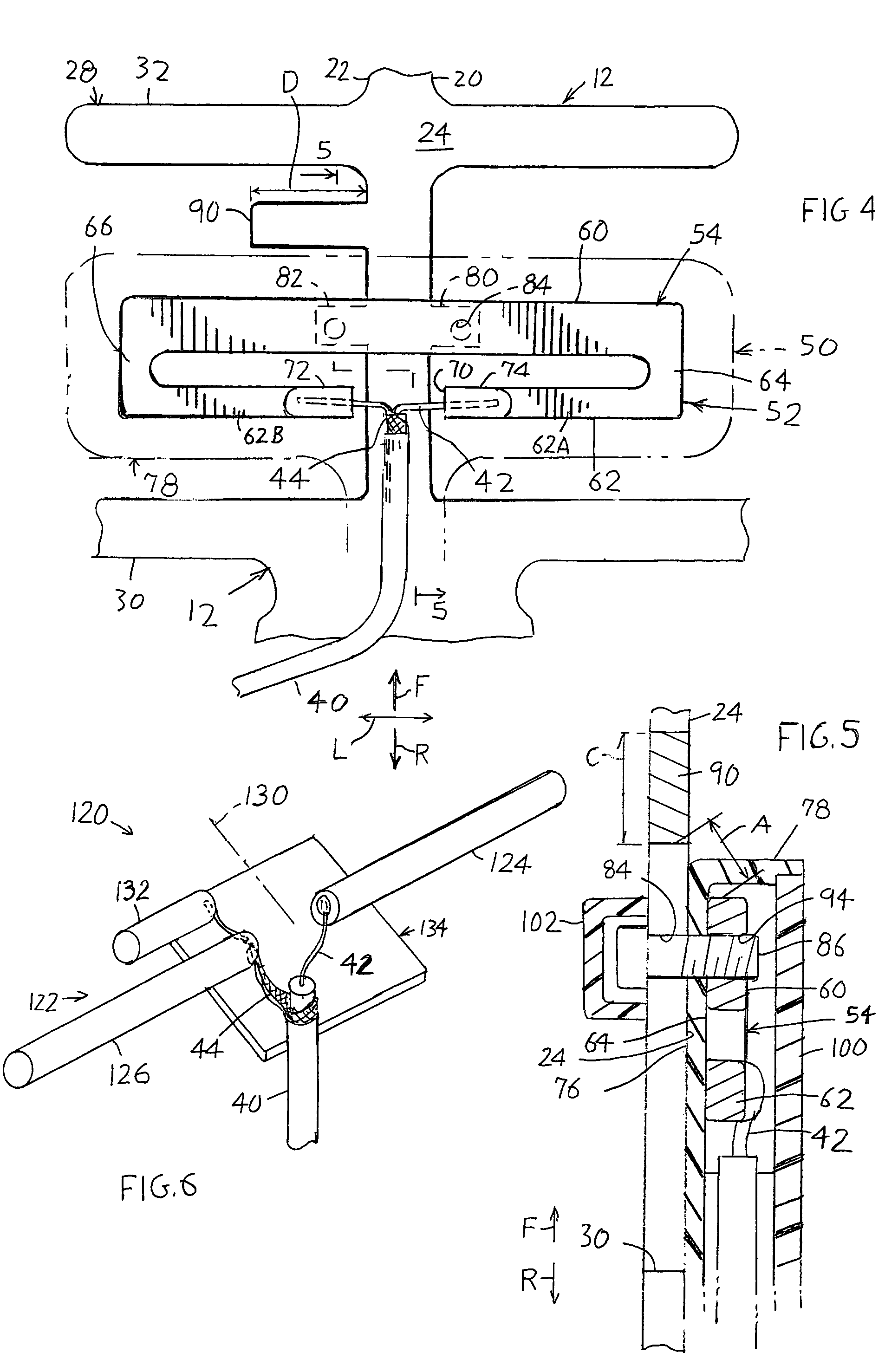Yagi antenna with balancing tab
a technology of balancing tab and antenna, which is applied in the direction of antennas, electrically long antennas, electrical apparatus, etc., can solve the problems of large antenna bulge, mechanical and electrical disadvantages, and serious deformation of antenna gain and radiation pattern, so as to reduce antenna cost, reduce antenna cost, and reduce radiation
- Summary
- Abstract
- Description
- Claims
- Application Information
AI Technical Summary
Benefits of technology
Problems solved by technology
Method used
Image
Examples
Embodiment Construction
[0011]FIGS. 1-3 illustrate a Yagi antenna 10 (named after the inventor, Yagi Hidetsuga) which is a highly directional antenna for electromagnetic radiation, with the particular antenna illustrated having been constructed for use in the 1900 MHz cell phone frequency band. The Yagi antenna includes an electrically conductive Yagi structure 12 having an elongated boom 14 that is elongated in front and rear directions F, R and that has laterally L opposite boom sides 20, 22 and opposite boom faces 24, 26. The Yagi structure also has a plurality of directors 28 that are each elongated in the lateral directions L and that each extends across the boom and that each has parts of equal length on laterally opposite sides of the boom. The Yagi structure also includes a reflector 30 that lies rearward of the directors 28 and that generally has a greater lateral length than the directors. The antenna radiates power in the forward direction F and receives radiation moving in the rearward directio...
PUM
 Login to View More
Login to View More Abstract
Description
Claims
Application Information
 Login to View More
Login to View More - R&D
- Intellectual Property
- Life Sciences
- Materials
- Tech Scout
- Unparalleled Data Quality
- Higher Quality Content
- 60% Fewer Hallucinations
Browse by: Latest US Patents, China's latest patents, Technical Efficacy Thesaurus, Application Domain, Technology Topic, Popular Technical Reports.
© 2025 PatSnap. All rights reserved.Legal|Privacy policy|Modern Slavery Act Transparency Statement|Sitemap|About US| Contact US: help@patsnap.com



